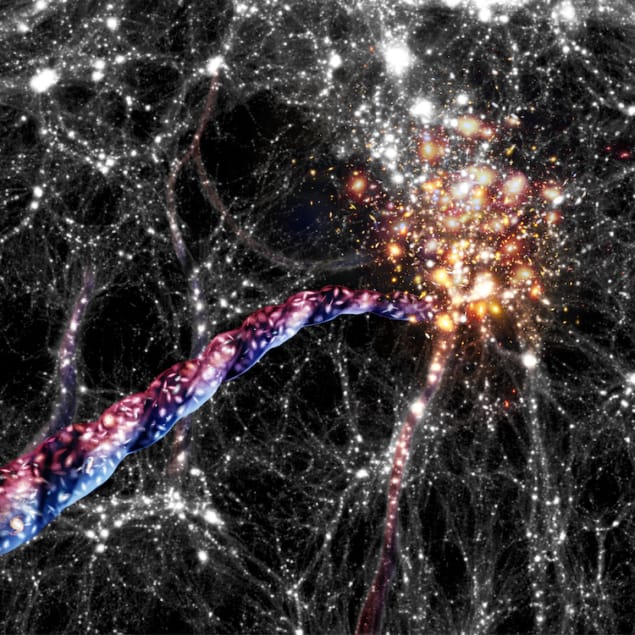Cosmic filaments, stretching hundreds of millions of light-years, have been found spinning!
Key Takeaways
- Astronomers discovered cosmic filaments that rotate, making them the largest spinning structures known.
- These colossal filaments act as “bridges,” connecting galaxy clusters across vast distances.
- The filaments’ rotation velocity can reach nearly 100 km/s, an unprecedented observation.
- The spin challenges existing models, hinting at unknown forces behind cosmic-scale rotation.
- More massive galaxy clusters at filament ends appear to increase filament rotation speeds, suggesting gravitational effects.
________
Cosmic Filaments: The Largest Spinning Structures Ever Found
The universe has revealed yet another surprise: cosmic filaments, vast tendrils of matter that span hundreds of millions of light-years, are spinning. This groundbreaking discovery, led by Noam Libeskind and his team from the Leibniz Institute for Astrophysics Potsdam, challenges existing theories and provides a new perspective on the origins of rotation in the universe.
These filaments, which connect galaxy clusters and funnel galaxies toward them, have diameters of a few million light-years. Using data from the Sloan Digital Sky Survey, the team analyzed light emitted by hundreds of thousands of galaxies. They detected rotation by examining redshift and blueshift patterns—indications of galaxies moving away from or toward Earth. When galaxies on opposite sides of a filament displayed contrasting velocities, the researchers concluded that the filament itself must be spinning.

Insights into Cosmic Spin
The study, published in Nature Astronomy, found that some filaments rotate at speeds nearing 100 km/s. This represents the largest scale at which angular momentum has been observed, raising questions about the mechanisms generating such rotation. The prevailing cosmological model suggests the early universe lacked primordial spin, meaning this angular momentum developed as cosmic structures formed.
One significant finding is that filaments linked to massive galaxy clusters rotate faster. This relationship implies that tidal forces or gravitational interactions between clusters could be responsible for the spin. Future studies aim to explore whether the galaxies within filaments share the same spin direction as the filaments themselves, potentially unlocking deeper insights into the origins of cosmic rotation.
This discovery not only expands our understanding of the universe’s structure but also hints at hidden physical processes shaping the cosmos. The phenomenon of filament rotation is an exciting frontier in unraveling the mysteries of angular momentum on a massive scale.




